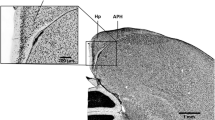Summary
In an attempt to learn more about the so-called “map” component in pigeon navigation, nine series of tests comprising 34 test releases were performed at a release site, 89 miles NNE of Ithaca, New York, where Cornell pigeons regularly depart nonrandomly but with a large clockwise deviation from the true home direction. The tests included releases of: (1) experienced pigeons new to the site, under sun; (2) pigeons with previous experience at the site, under sun; (3) experienced pigeons new to the site, under total overcast; (4) pigeons with previous experience at the site, under total overcast; (5) first-flight youngsters, under sun; (6) directionally trained pigeons; (7) pigeons from two other Ithaca-area lofts; (8) pigeons from two more distant lofts; (9) Bank Swallows from an Ithaca colony; (10) clock-shifted pigeons; (11) radio- and airplane-tracked pigeons.
The results of these tests indicate that the directional bias of the Cornell pigeons is, in general, not dependent on weather conditions or on the previous experience of the birds. Moreover, a similar bias is shown by both pigeons from other Ithacaarea lofts and Bank Swallows from Ithaca. And a similar bias from their respective home directions is shown by birds from other areas. Clock-shifted pigeons departing more directly toward home have poorer homing success than controls. It is concluded that some environmental factor basic to the avian homing process is rotated clockwise at this release site, that biologically the birds are not making an “error” but are probably reading correctly a distorted map.
Similar content being viewed by others
References
Alexander, J. R., Keeton, W. T.: The effect of directional training on initial orientation in pigeons. Auk89, 280–298 (1972)
Batschelet, E.: Statistical methods for the analysis of problems in animal orientation and certain biological rhythms, 57 p. Washington: Amer. Inst. Biol. Sci. 1965
Batschelet, E.: Recent statistical methods for orientation data. In: Animal orientation and navigation (NASA SP-262). Washington: U.S. Govt. Printing Office 1972
Cochran, W. W.: 145–160 MHz beacon (tag) transmitter for small animals. BIAC Information Module M15. 1967
Graue, L. C.: Experience effect on initial orientation in pigeon homing. Anim. Behav.13, 149–153 (1965)
Keeton, W. T.: Orientation by pigeons: Is the sun necessary? Science165, 922–928 (1969)
Keeton, W. T.: Magnets interfere with pigeon homing. Proc. nat. Acad. Sci. (Wash.)68, 102–106 (1971)
Keeton, W. T.: Effects of magnets on pigeon homing. In: Animal orientation and navigation (NASA SP-262). Washington: U.S. Govt. Printing Office 1972
Keeton, W. T.: The orientational and navigational basis of homing in birds. In: Advances in the study of behavior, vol. 5. New York: Academic Press (In press)
Keeton, W. T., Gobert, A.: Orientation by untrained pigeons requires the sun. Proc. nat. Acad. Sci. (Wash.)65, 853–856 (1970)
Kramer, G.: Die Sonnenorientierung der Vögel. Verh. dtsch. zool. Ges. Freiburg1952, 72–84 (1953)
Kramer, G.: Experiments in bird orientation and their interpretation. Ibis99, 196–227 (1957)
Kramer, G.: Recent experiments on bird orientation. Ibis101, 399–416 (1959)
Kramer, G., St. Paul, U. v.: Ein wesentlicher Bestandteil der Orientierung der Reisetaube: die Richtungsdressur. Z. Tierpsychol.7, 620–631 (1950)
Matthews, G. V. T.: Bird navigation, 2nd ed., 197 p. Cambridge: Cambridge Univ. Press 1968
Schmidt-Koenig, K.: Experimentelle Einflußnahme auf die 24-Stunden-Periodik bei Brieftauben und deren Auswirkungen unter besonderer Berücksichtigung des Heimfindevermögens. Z. Tierpsychol.15, 301–331 (1958)
Schmidt-Koenig, K.: Internal clocks and homing. Cold Spr. Harb. Symp. quant. Biol.25, 389–393 (1960)
Schmidt-Koenig, K.: Die Sonne als Kompaß im Heim-Orientierungssystem der Brieftauben. Z. Tierpsychol.18, 221–244 (1961)
Schmidt-Koenig, K.: On the role of the loft, the distance and site of release in pigeon homing (the “cross loft experiment”). Biol. Bull.125, 154–164 (1963)
Schmidt-Koenig, K.: Current problems in bird orientation. Advanc. Behav.1, 217–278 (1965)
Wallraff, H. G.: Örtlich und zeitlich bedingte Variabilität des Heimkehrverhaltens von Brieftauben. Z. Tierpsychol.16, 513–544 (1959a)
Wallraff, H. G.: Über den Einfluß der Erfahrung auf das Heimfindevermögen von Brieftauben. Z. Tierpsychol.16, 424–444 (1959b)
Wallraff, H. G.: The present status of our knowledge about pigeon homing. Proc. XIV. Int. Ornith. Cong. Oxford 1966, 331–358 (1967)
Wallraff, H. G.: Über die Flugrichtungen verfrachteter Brieftauben in Abhängigkeit vom Heimatort und vom Ort der Freilassung. Z. Tierpsychol.27, 303–351 (1970)
Wallraff, H. G.: The effect of directional experience on initial orientation in pigeons. Auk (In press)
Wiltschko, W., Wiltschko, R.: Magnetic compass of European Robins. Science176, 62–64 (1972)
Windsor, D. M.: Directional preferences and their relation to navigation in homing pigeons (Columba livia). Ph. D. Thesis, Cornell University, 1972
Author information
Authors and Affiliations
Additional information
I thank Irene Brown and Timothy Larkin for their aid in all phases of this project; Donald Windsor for help in two releases; Charles Walcott and Martin Michener for aid in airplane tracking; J. Downhower for collaboration in the radio tracking and swallow releases; Andre Gobert, Howard French, A. E. Newton, and Ludwig Karl for permitting me to use their pigeons, George Yerdon, Forest Ranger, and Andy Misura, District Ranger, New York State Department of Environmental Conservation, for their cooperation in making the facilities of the Castor Hill Fire Tower available to us; Monica Howland for preparing the drawings; and Bertha Blaker for typing. Research supported in part by NSF Grants GB-13046X and GB-35199X, and in part by Federal Hatch funds.
Rights and permissions
About this article
Cite this article
Keeton, W.T. Release-site bias as a possible guide to the “map” component in pigeon homing. J. Comp. Physiol. 86, 1–16 (1973). https://doi.org/10.1007/BF00694473
Received:
Published:
Issue Date:
DOI: https://doi.org/10.1007/BF00694473




